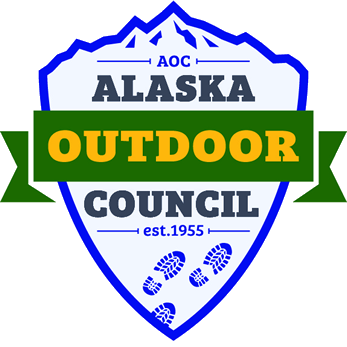Rod Arno, Public Policy Director for the Alaska Outdoor Council
Alaska’s ecosystem are dependent on healthy stocks of salmon returning ever year. Coastal marine mammals, pelagic and nonpelagic fish, shellfish, seabirds, some birds, coastal bears, many furbearers, stream-bed willow eating moose, insects, and Alaskans who choose to make salmon part of their food source are likewise all depending on those returning salmon runs.
Alaska’s Board of Fisheries (BOF) is charged with taking regulatory authority to ensure the conservation of salmon species in Alaska waters. Sustained yield management of public resources (salmon) in Alaska is required under the Alaska State Constitution, Article 8, Section 4 Sustained Yield. The BOF has no regulatory authority over the Sun, CO2 emissions, or salmon hatchery releases in the North Pacific by Russia, China, or Japan. The BOF does have regulatory authority over salmon hatchery releases in Alaska state waters and harvest of salmon by commercial and individual fish gathers.
Individuals, organizations, the commercial fishing industry, the Alaska Department of Fish & Game ADF&G, Federal Land Managers, Alaska Native Tribes, the Fish & Game Advisory Committees (AC), and the BOF members themselves can all submit proposals to the BOF to deliberate on and enact or fail. It’s totally up to the BOG members voting on proposals to regulate; seasons, openings and closures to harvest and gear types that are allowed in state waters to harvest salmon in Alaska, when necessary to help ensure sustainable salmon returns.
The Alaska State Constitution Article 8, Section 2. General Authority gave the Legislature authority to manage fish on the sustained yield principle. The AK State Legislature passed that responsibility on to 7 individual Alaskans serving on the BOF. BOF members decide which proposals before them for deliberations will help restore sustainable returns of all salmon species to Alaska waters during public board meetings. Alaskans who choose to gather their own wildfood harvest of salmon in SouthCentral, Interior, and SouthEast Alaska could easily have their opportunities to catch fish in state waters change. Those changes in regulation could hopefully aid conservation of fish and individual users harvest opportunities depending on what actions the BOF takes on 100’s of proposals every year. Here are two important BOF meetings coming up this winter;
December 10-16, 2024 the BOF meets in Cordova
Agenda includes fisheries in PWS and Upper Copper/Upper Susitna River Finfish (salmon) and shellfish.
The Alaska Outdoor Council (AOC) has submitted Proposal #14 to close the PWS walleye pollock pelagic trawl fishery – until the trawler fleet can guarantee they won’t disturbed the ocean floor bed. State protection of the seabed ecosystem in Alaska waters is a conservation concern to AOC.
Under any conditions dragging trawl gear along the seabed to gather fish is not sustainable nor in the best interest of the public’s resource.
Also during these times of historic low Chinook salmon returns to numerous Alaska river systems it is timely for the BOF members to take the “precautionary principle” seriously when considering proposals reducing salmon harvest, the board has that authority.
January 28- February 9, 2025 the BOF meets in Ketchikan
Agenda items SE and Yakutat Finfish and Shellfish.
Normally the ADF&G gets the most proposals passed into regulation at each BOF meeting. That makes sense, they gather fish data. It makes sense that the text group with successful proposals would be the commercial fishing industry, their livelihood depends on the BOF actions. Commercial Fisheries folks (which includes guided sport fish) attend in person and participate heavily in the Board Committee process which allows for compromised amended proposals to pass during Board deliberations. Adoption of F&G AC proposals occurs randomly, they also participate in the Committee process and their support or opposition to submitted proposals is taken into consideration by the BOF members.
As we’ve heard before F&G AC are only advisory to the BOF members, no obligation to follow their recommendations.
All None Government Organizations (NGO), interested enough to participate in fish management and allocation by the Alaska regulatory authorities, success before the BOF is directly related to their level of participation at the BOF meeting and beforehand during the state election process. The Governor appoints and a majority of legislators must vote to confirm all Board of Fisheries members.
With the passage of the Alaska State Constitution Article 8 ~ Natural Resources Section 4 Sustained Yield it became painfully clear that you must participate in the regulatory process of harvesting fish if you want to keep harvesting when they got the wording approved in
“Preferences (to fish harvest) are subject to what is the beneficial uses.”
It’s the BOF members who determine what is the beneficial uses of salmon returning to Alaska. While the legislators gave the BOF specific criteria AS 16.05.251(e) to allocate among beneficial uses the board has little latitude when it comes to getting around the requirement of sustained yield management for any wild salmon stock, AS 16.05.251(h).
The more public support for a BOF proposal, whether it’s written or oral testimony, the greater the change the Board members will give it serious consideration. The deadline for submitting commenting on proposals for PWS and the Copper River is November 26th, for SE Alaska it’s January 14, 2025. (Access to fish proposals, how to send in comments online, and who the current BOF members are can be found on the ADF&G website) Just asking BOF members to adopt certain proposals that your experience has shown you would help conserve declining salmon runs and to follow the statutes regarding conservation and allocation would let them
know your preference, as one who benefits from healthy salmon stocks in Alaska. AOC staff will be in Cordova for the BOF meeting supporting conservation and individual use of fish, hope to see you there.
